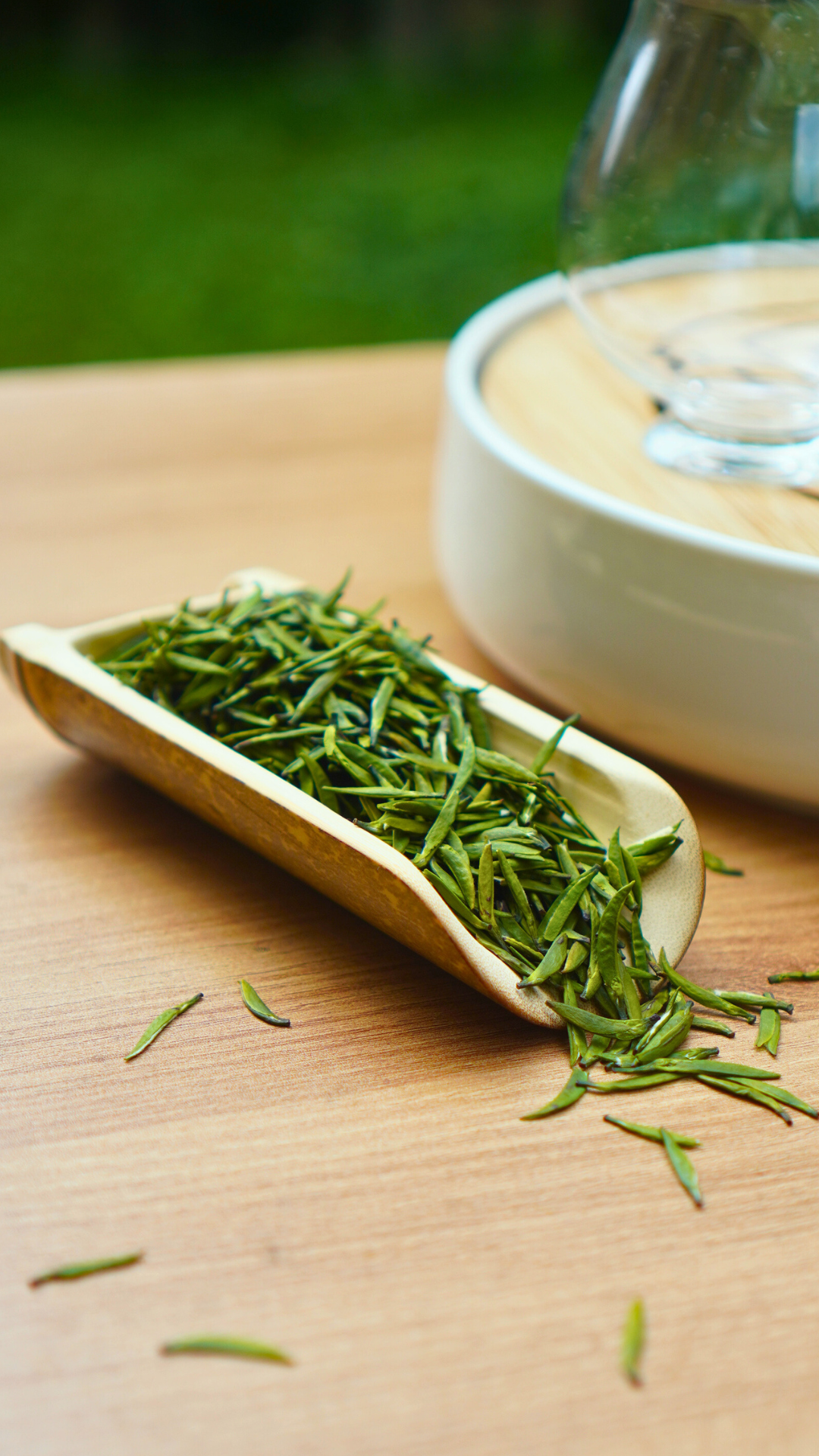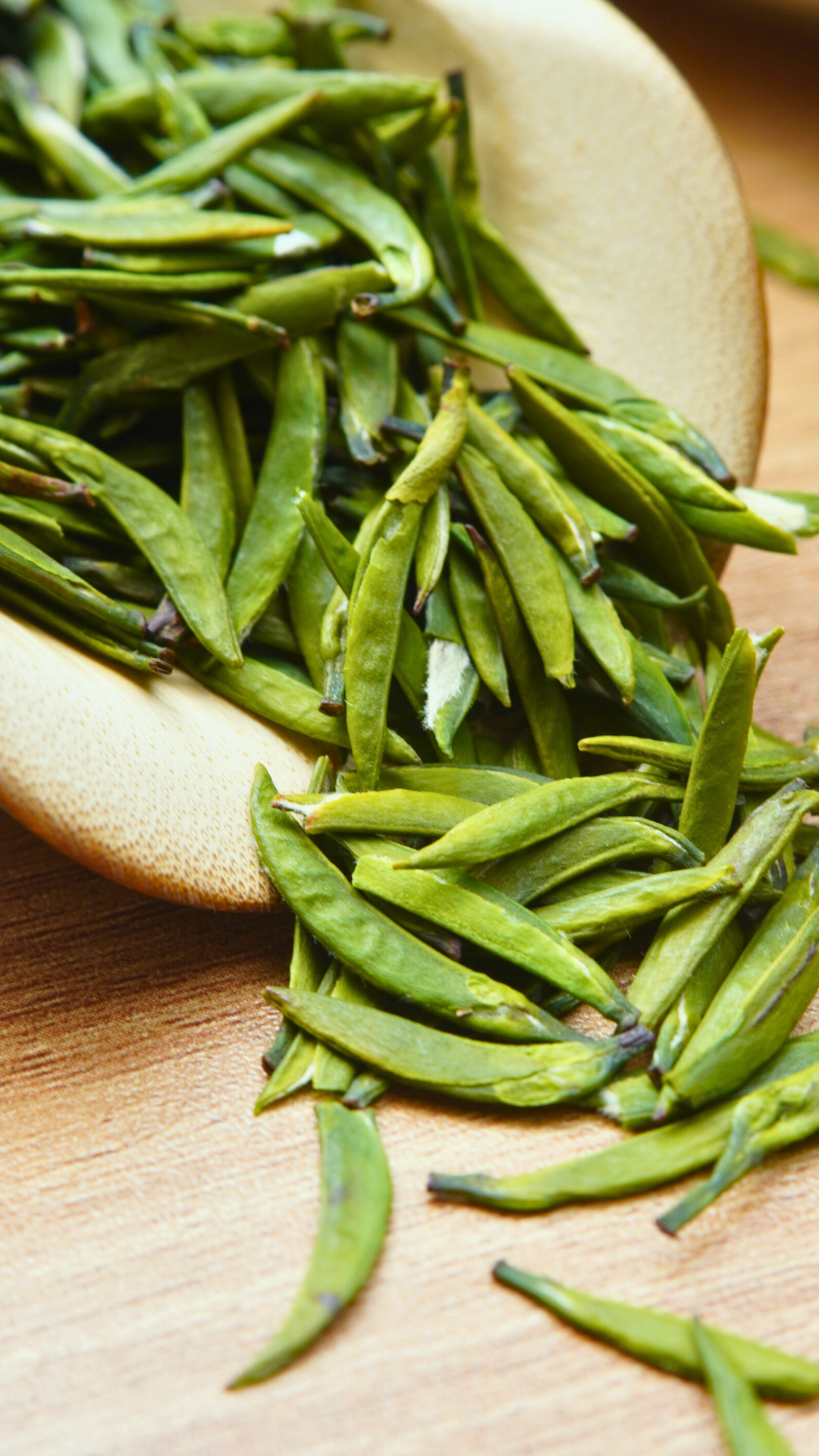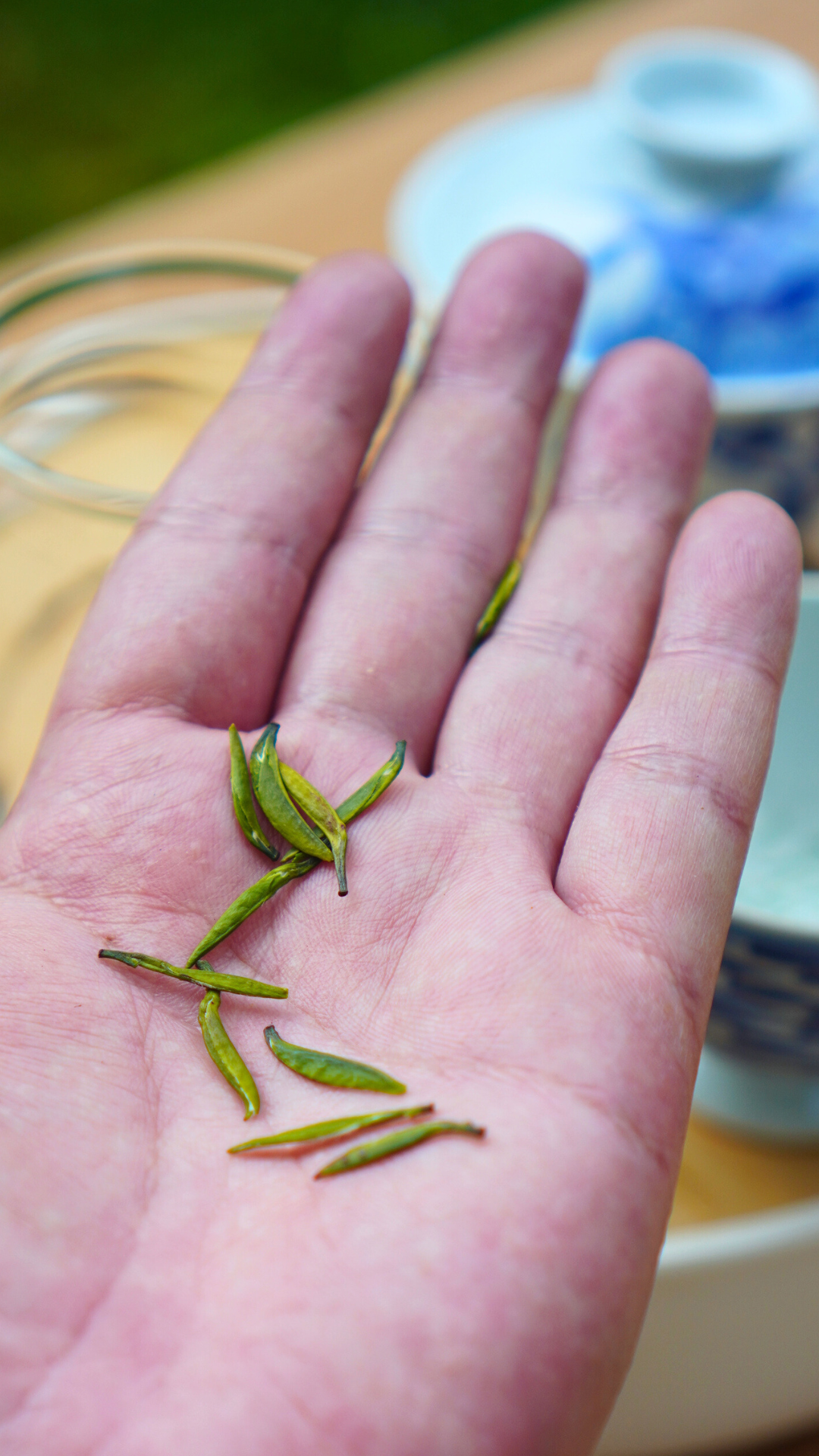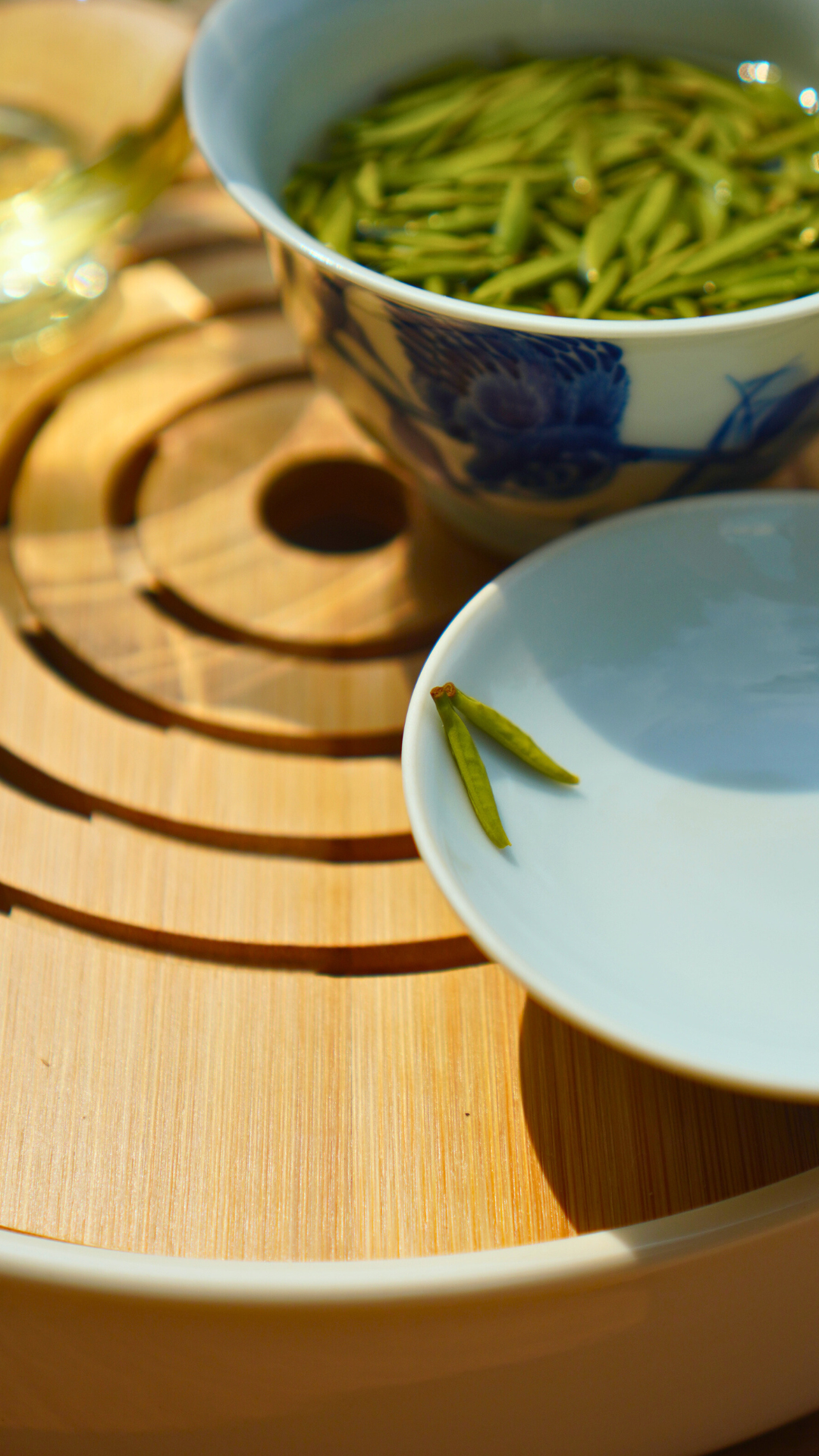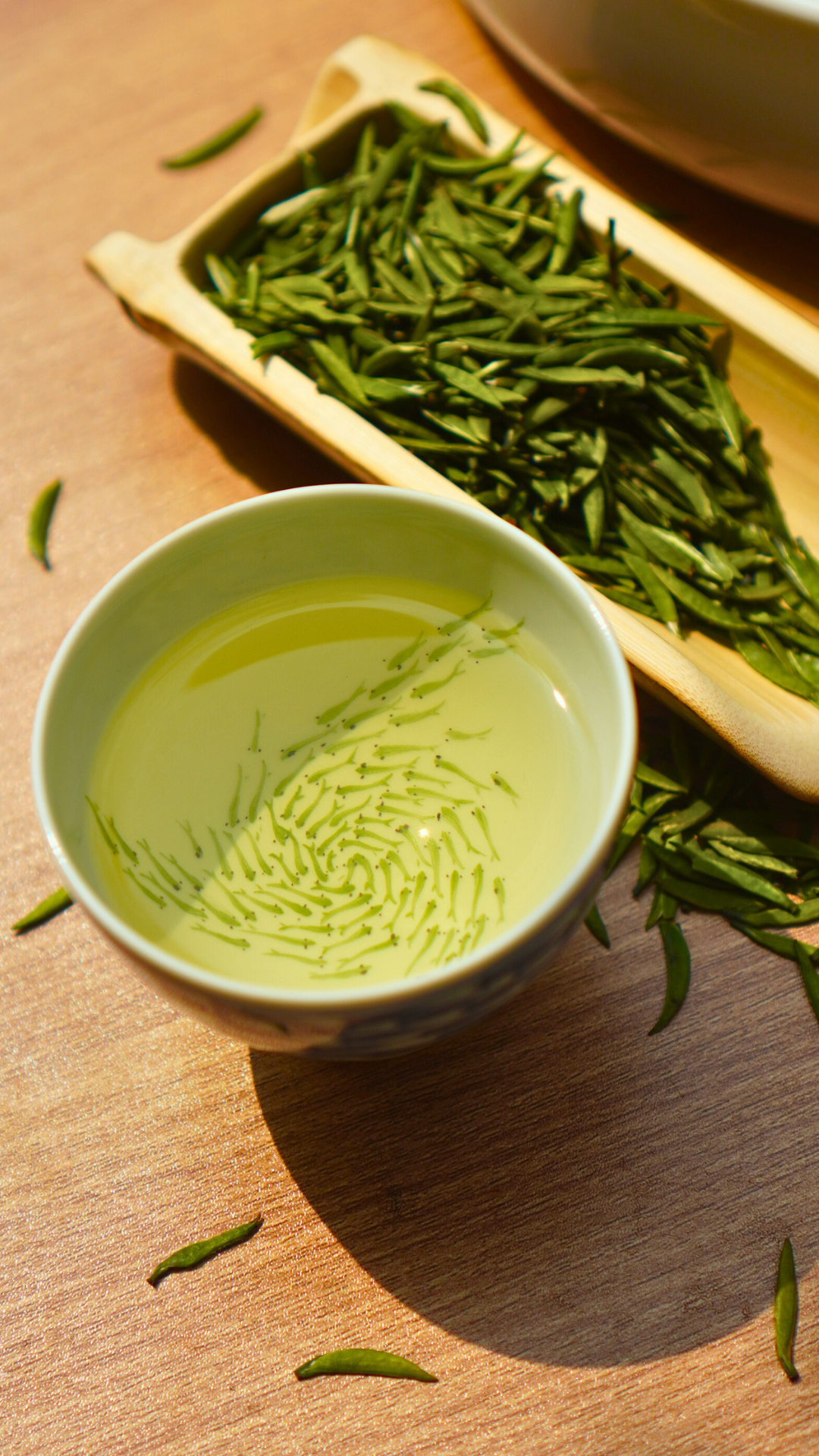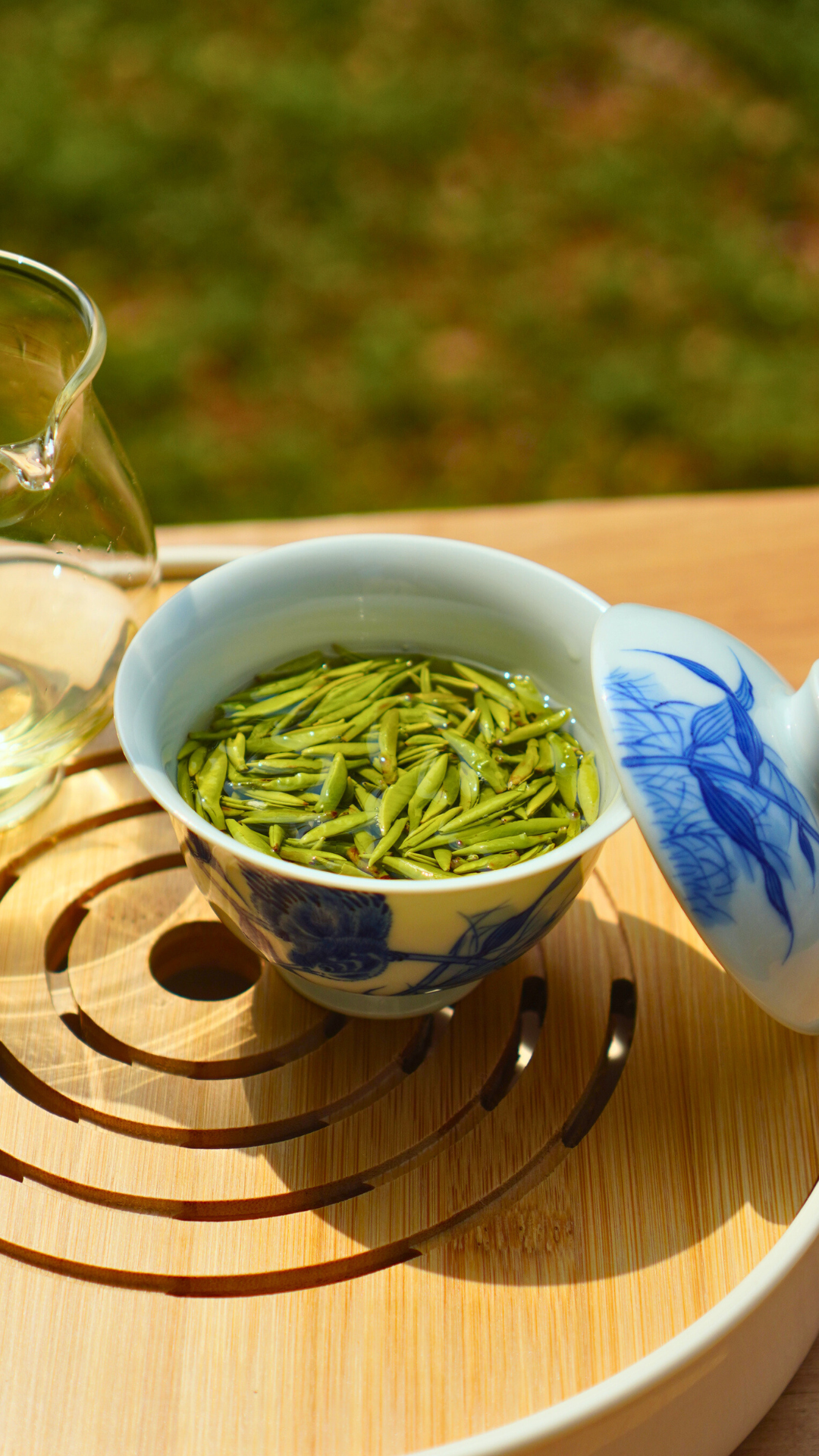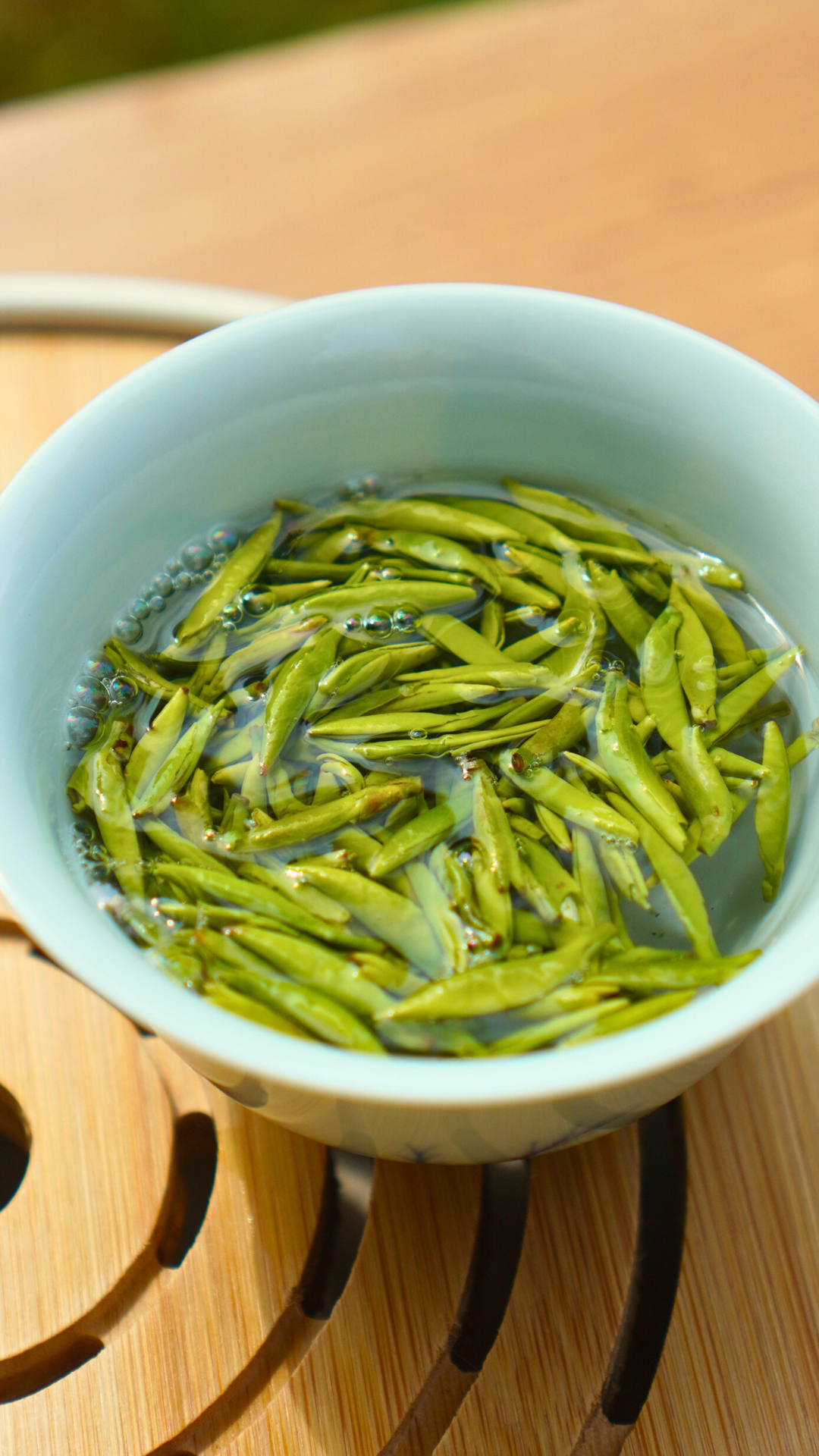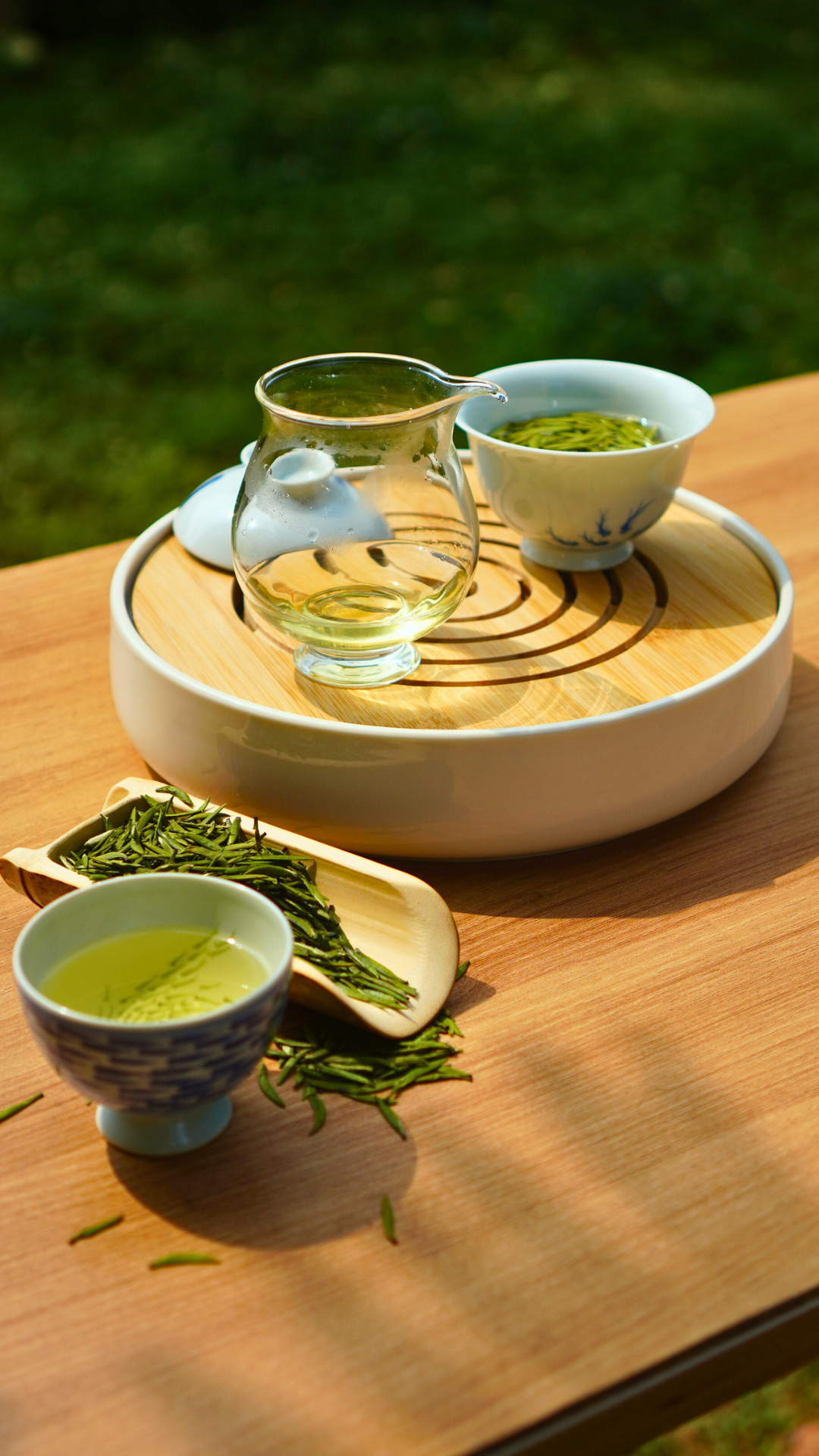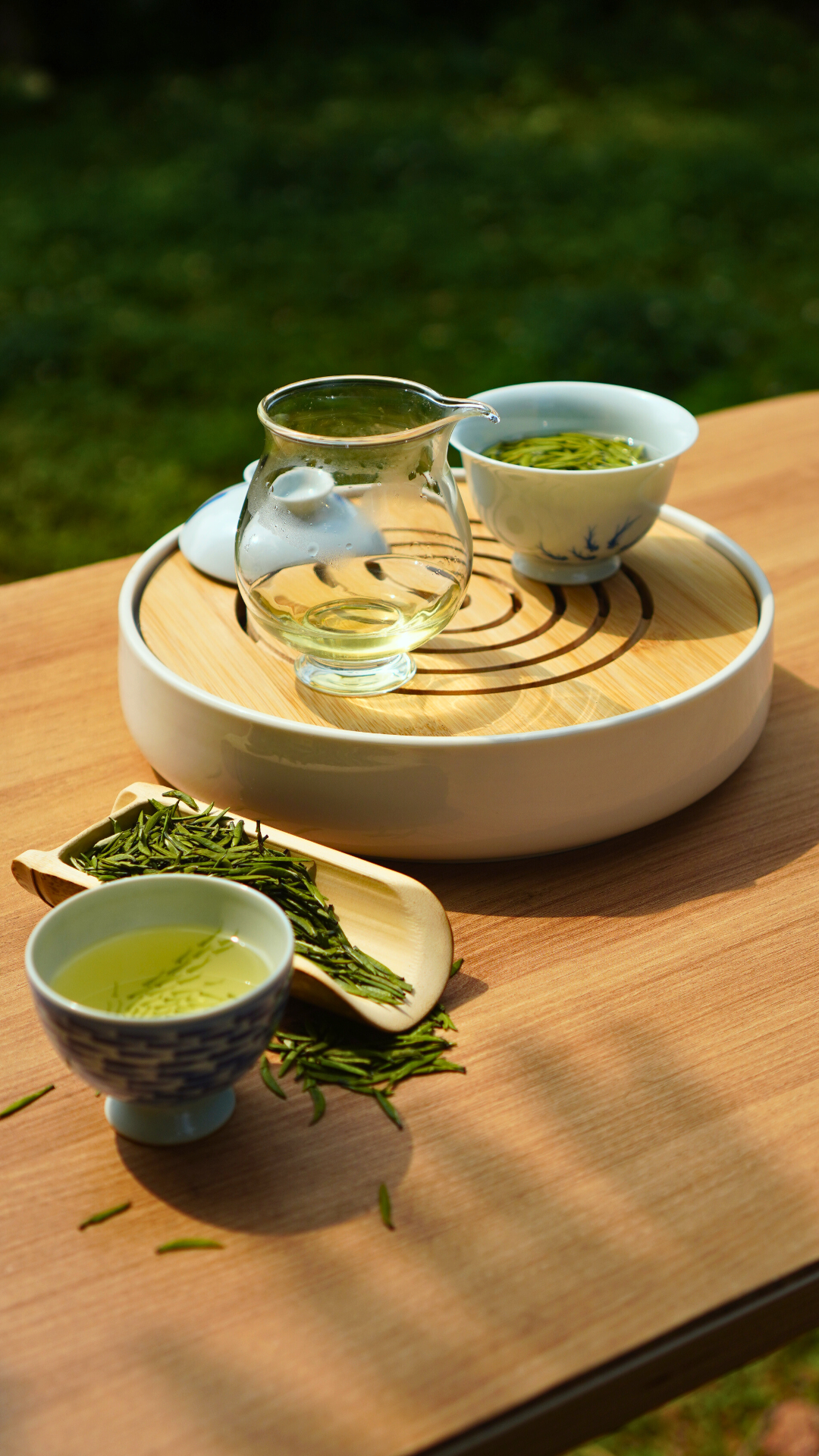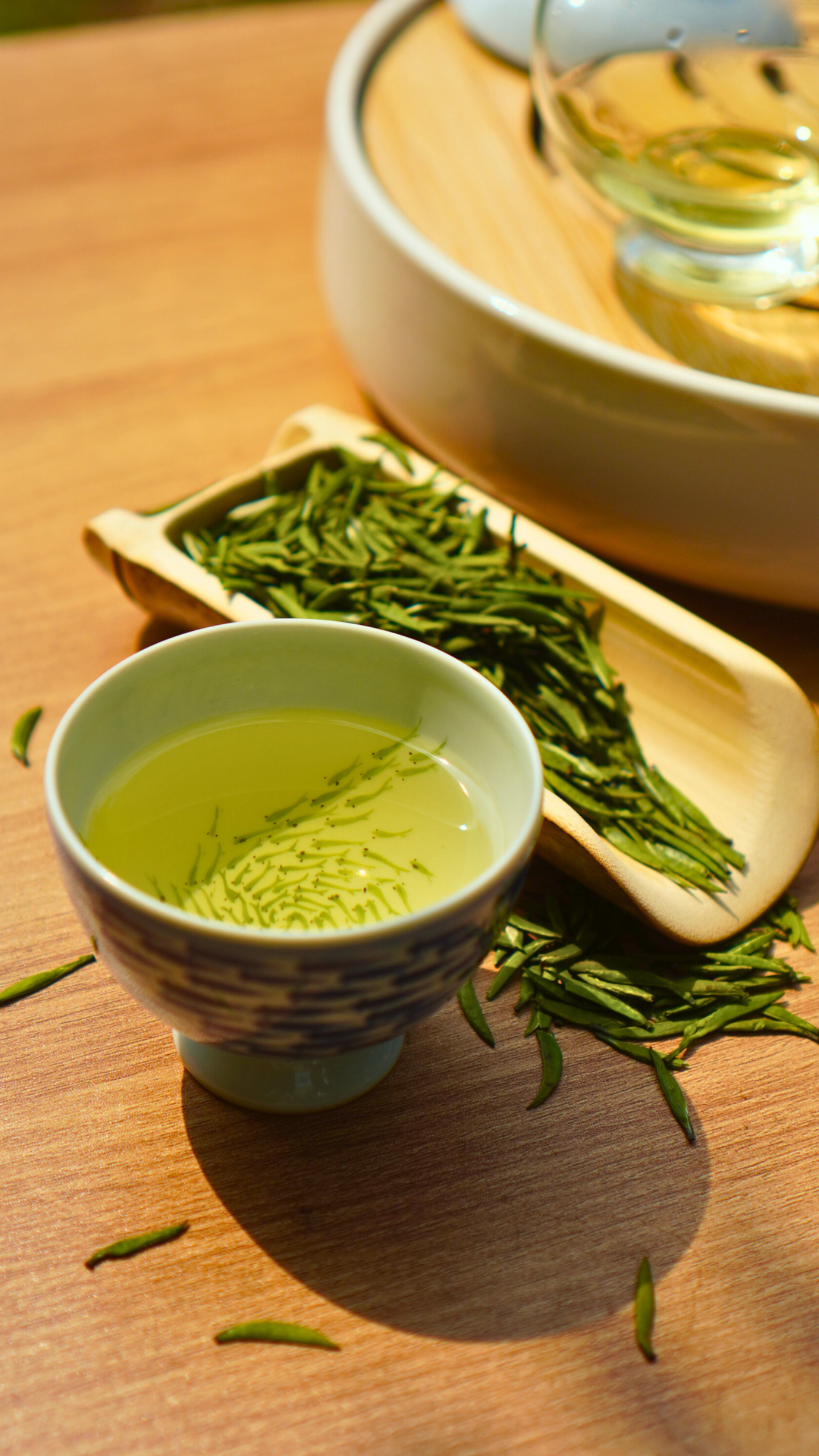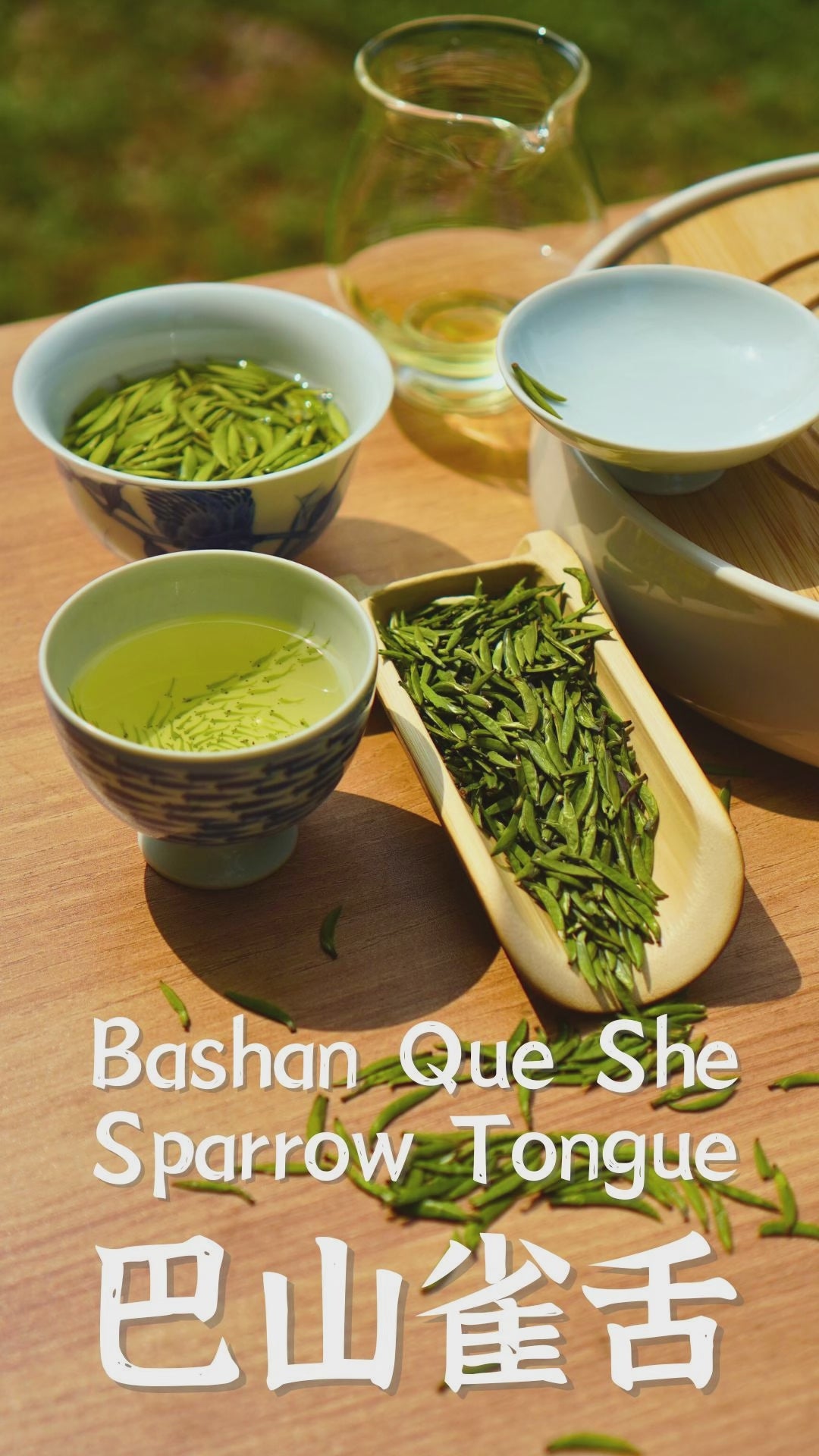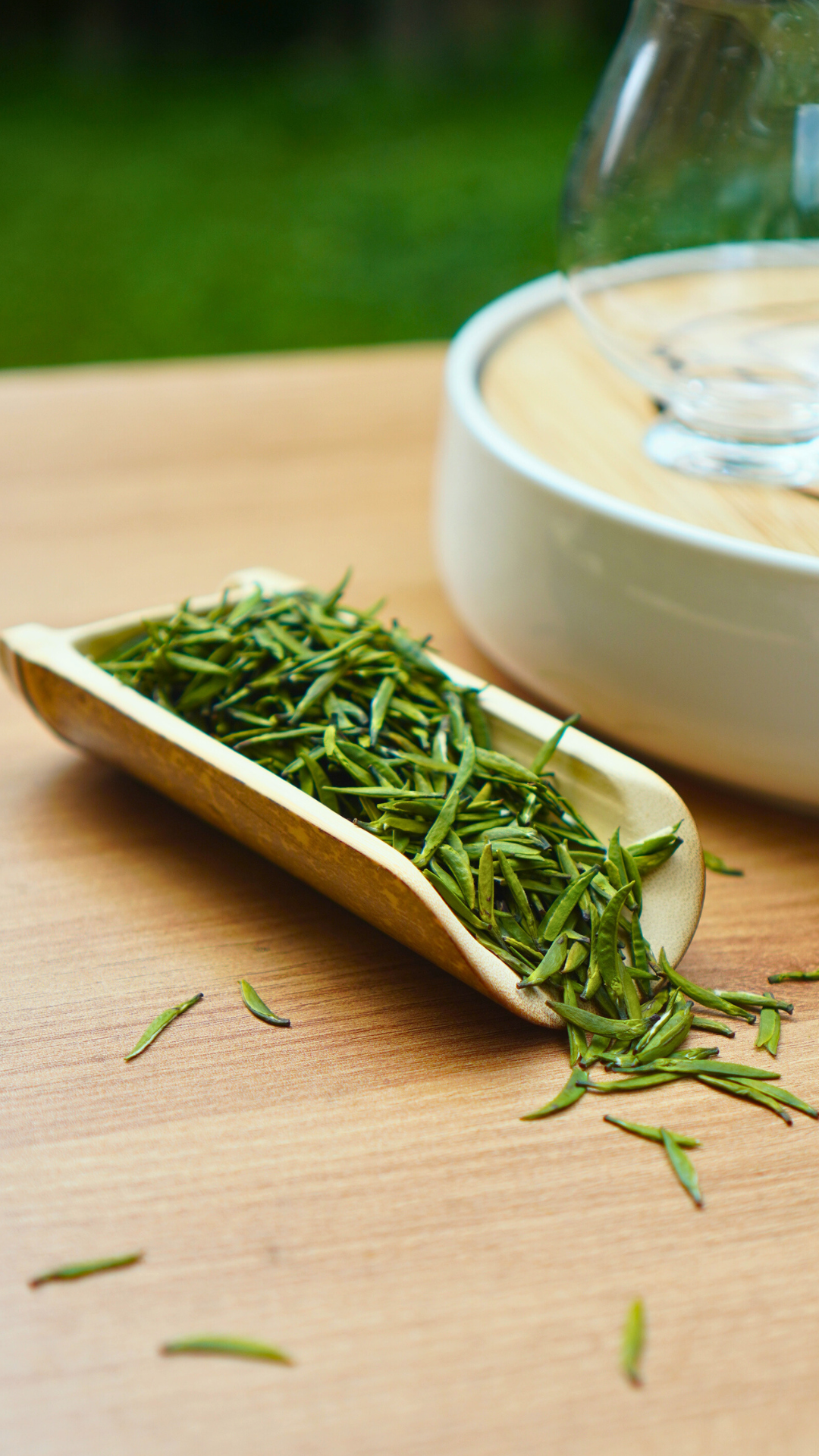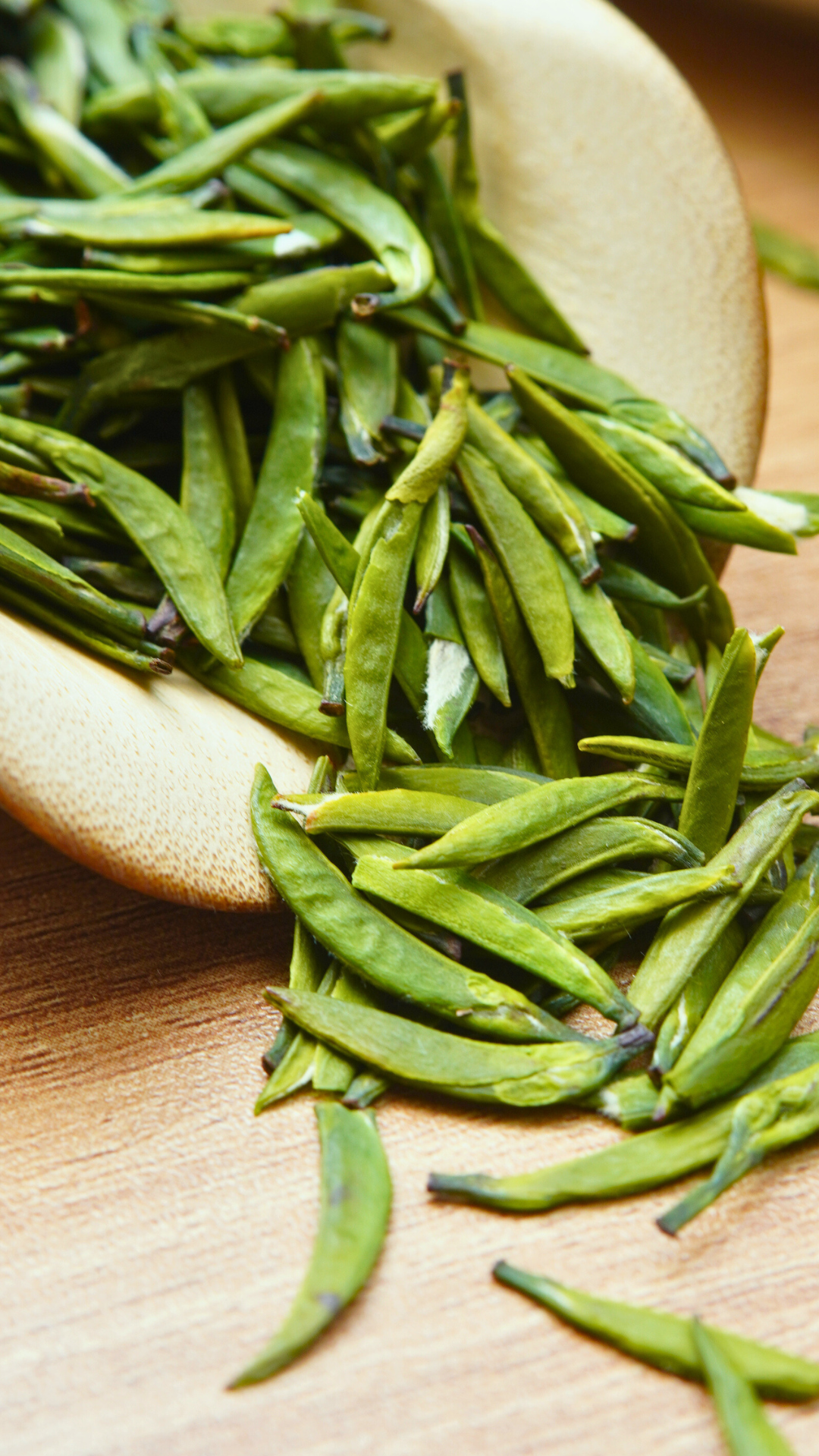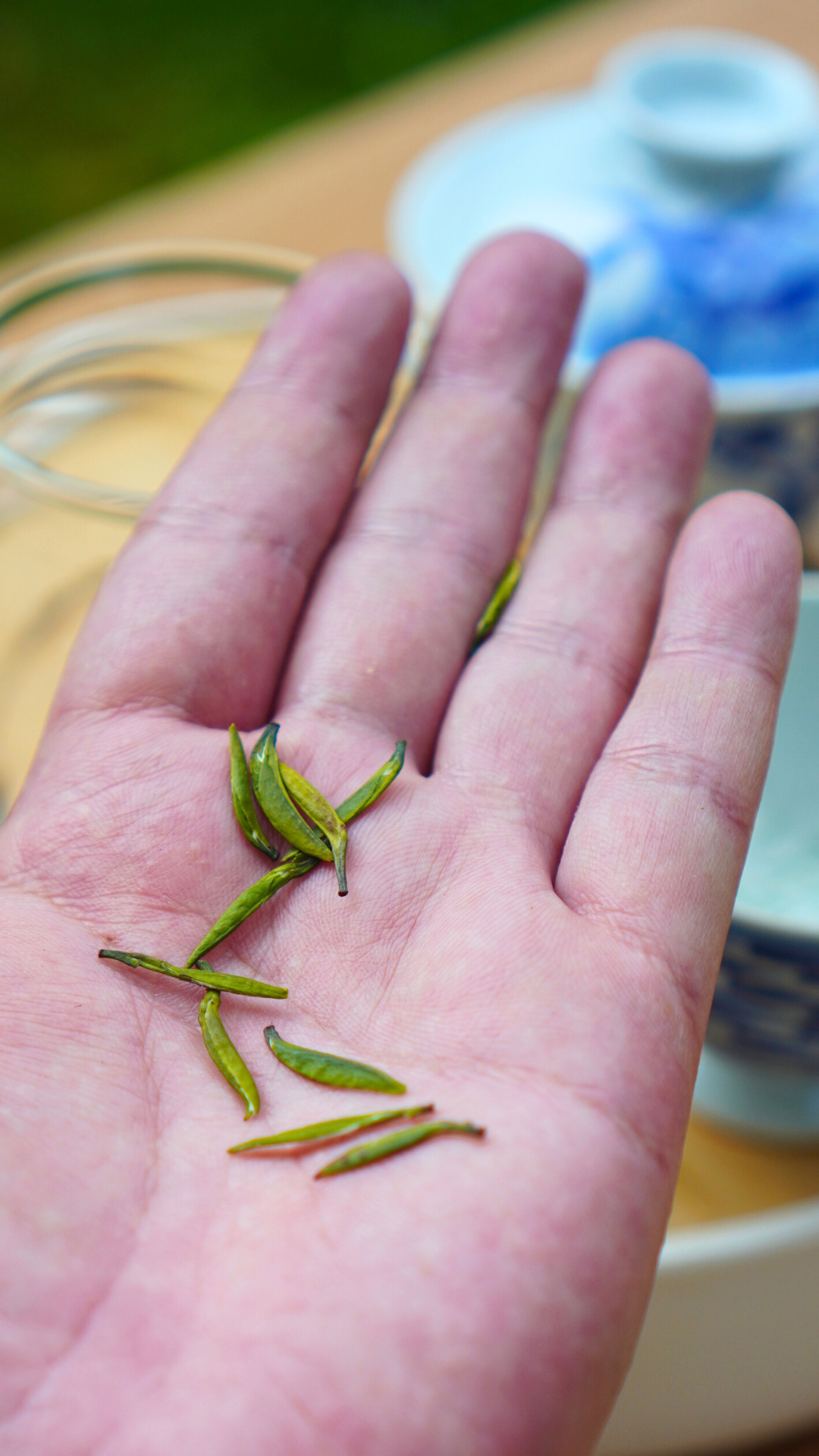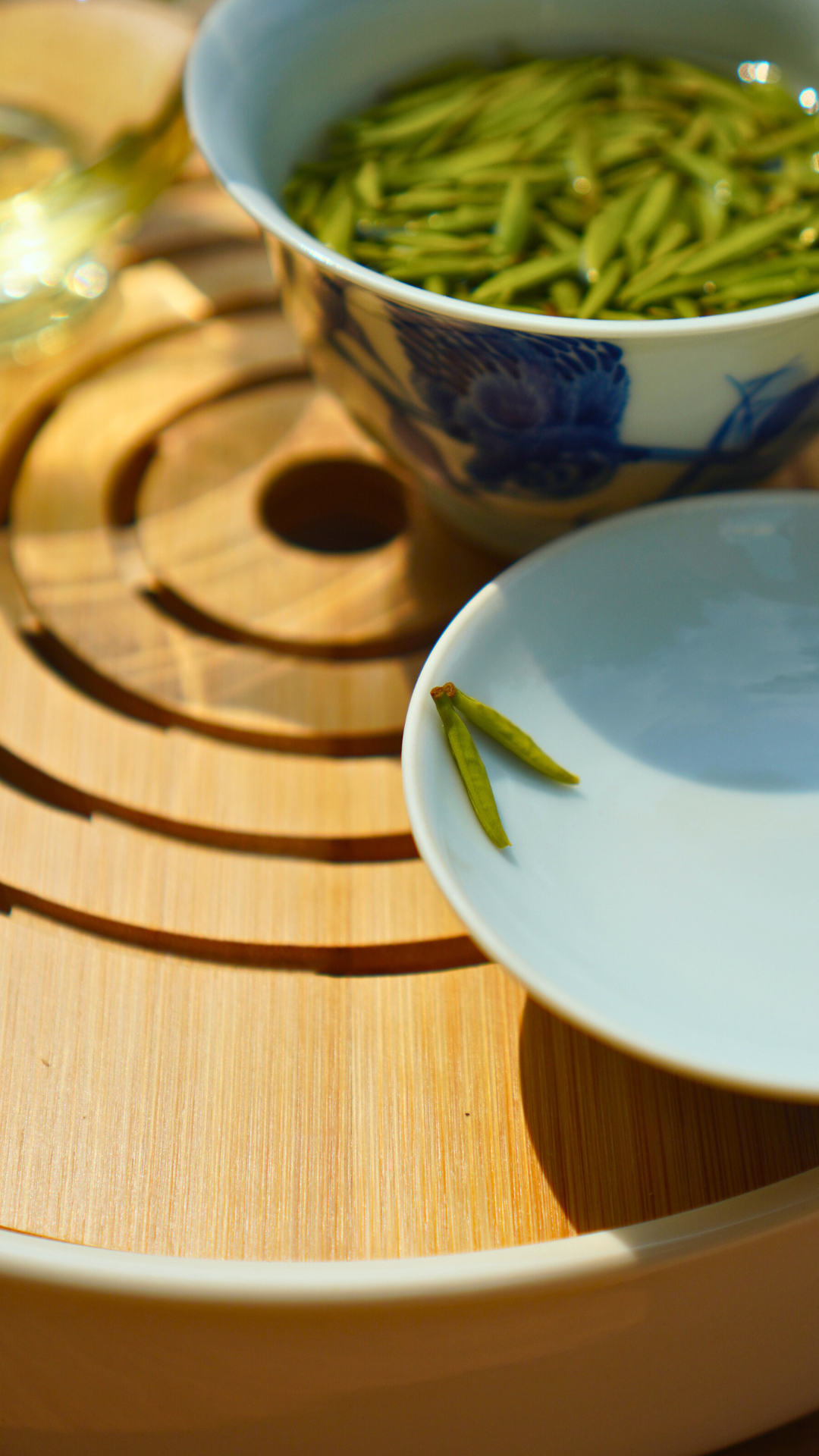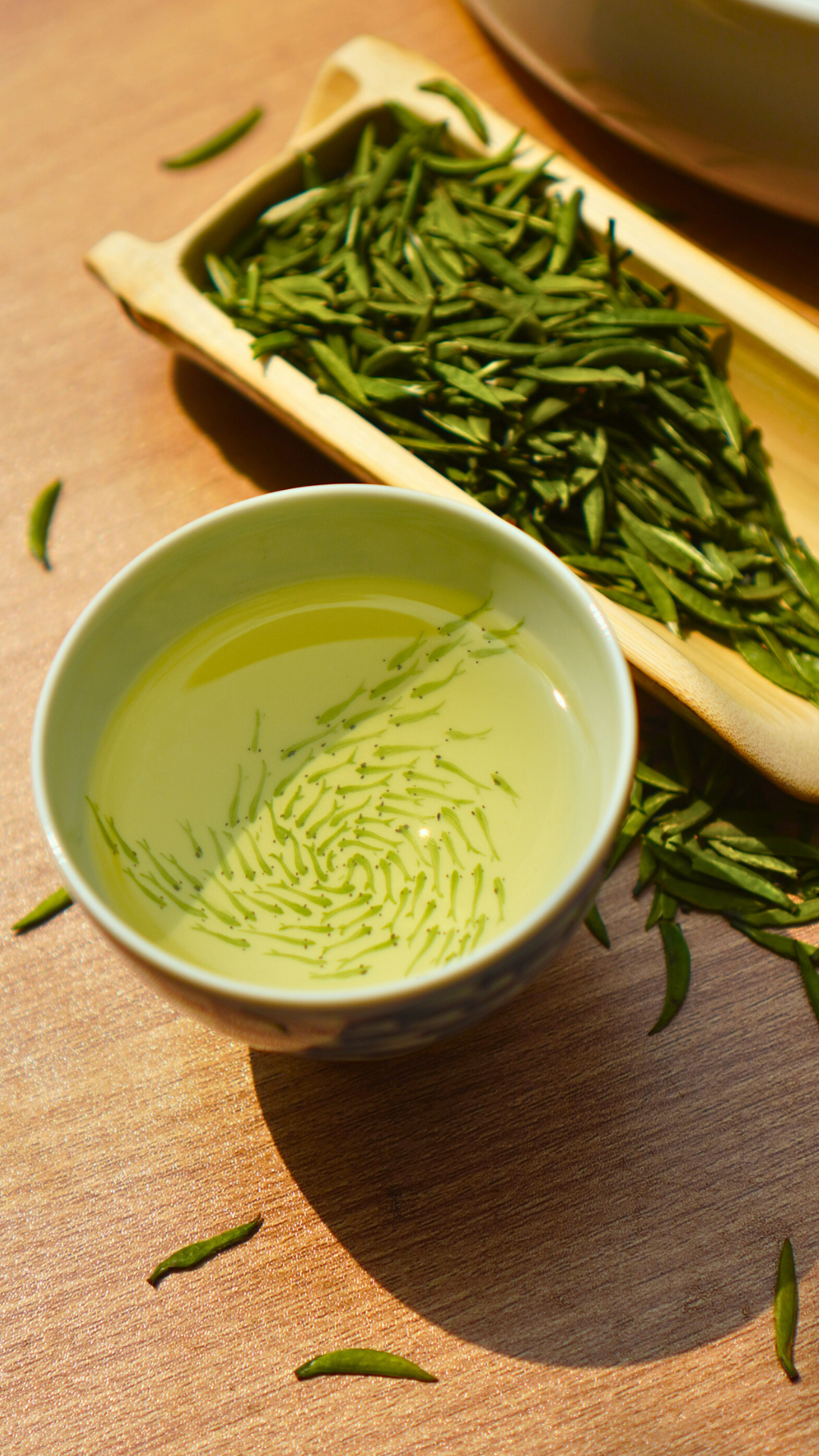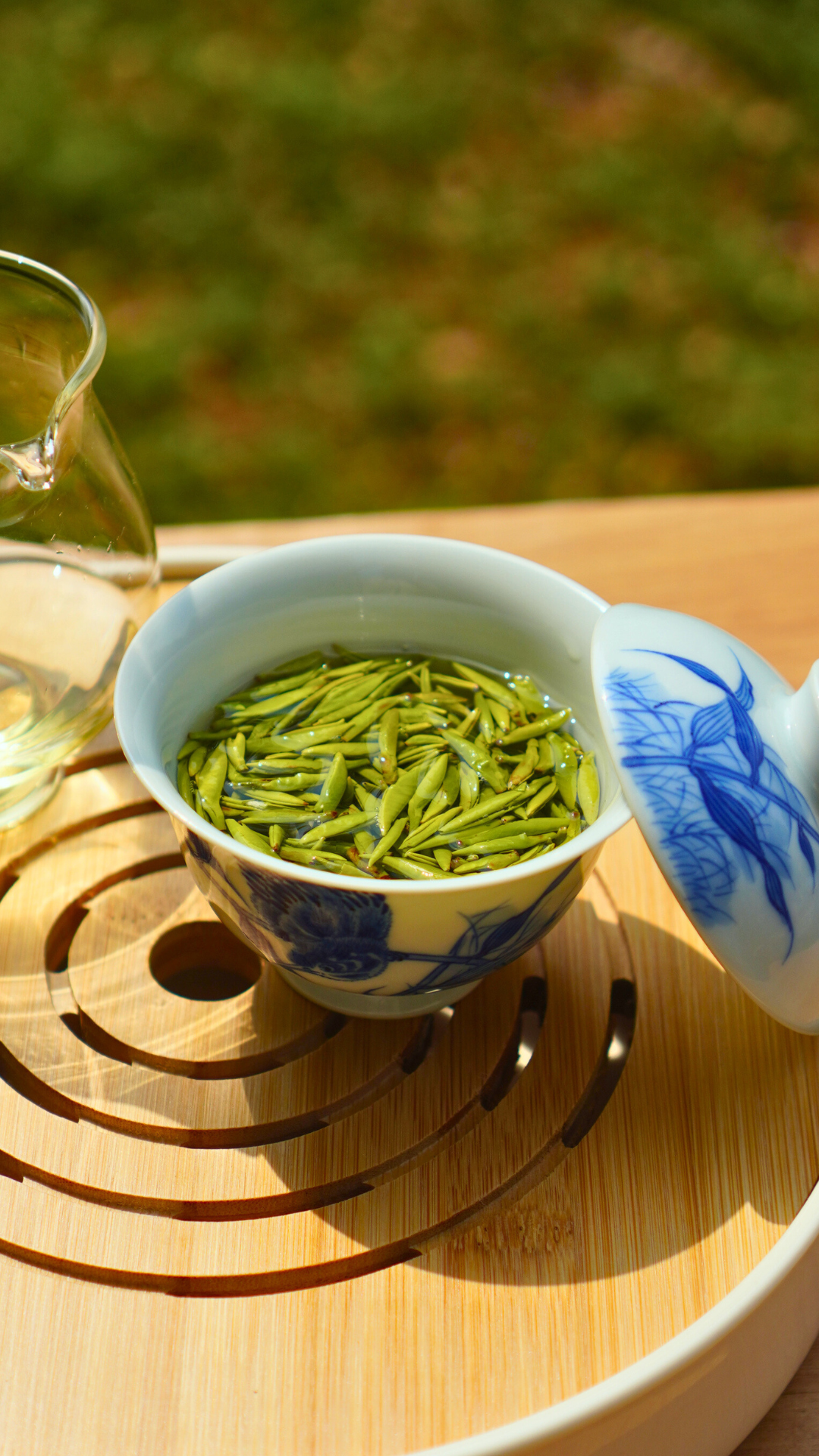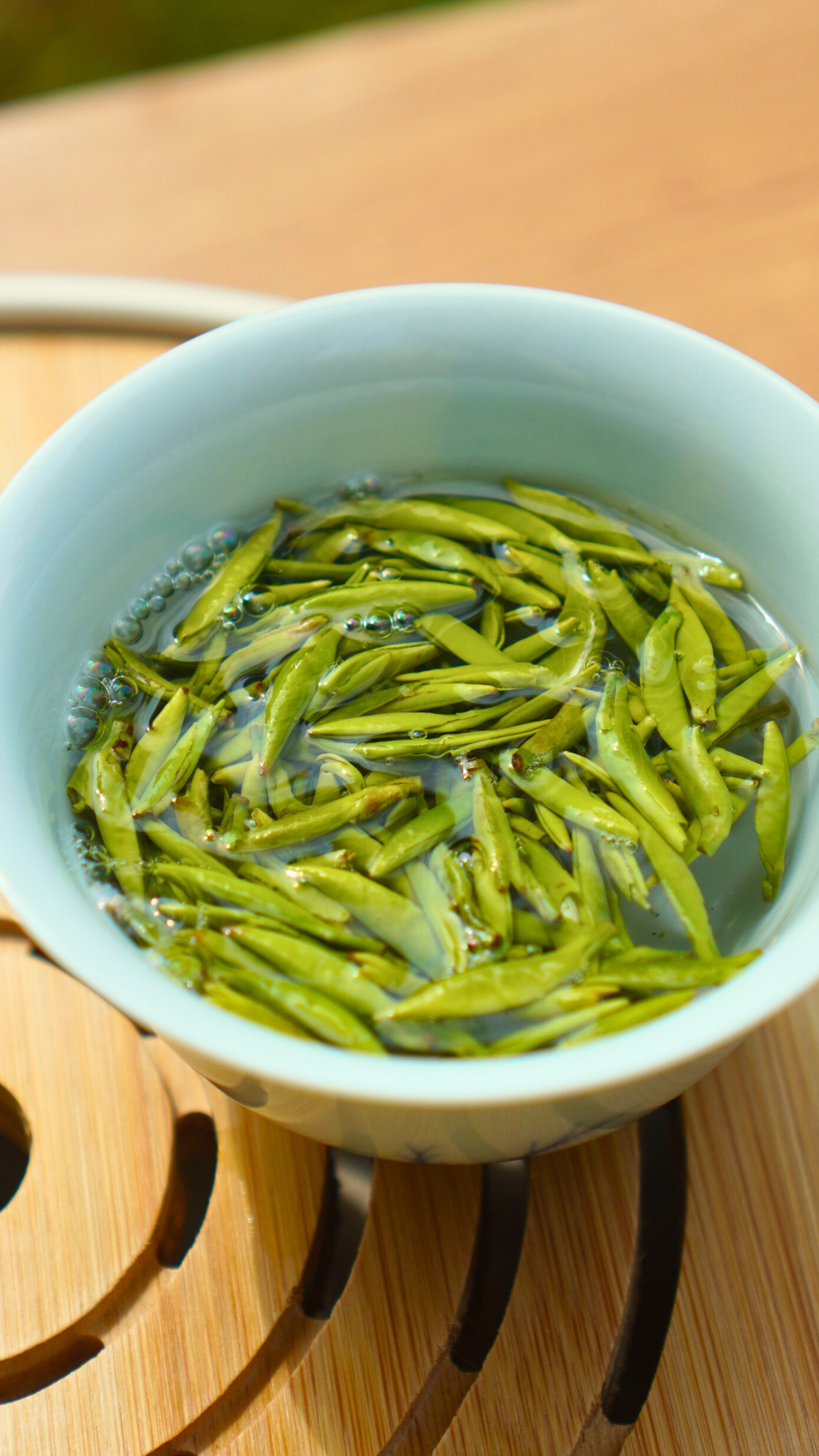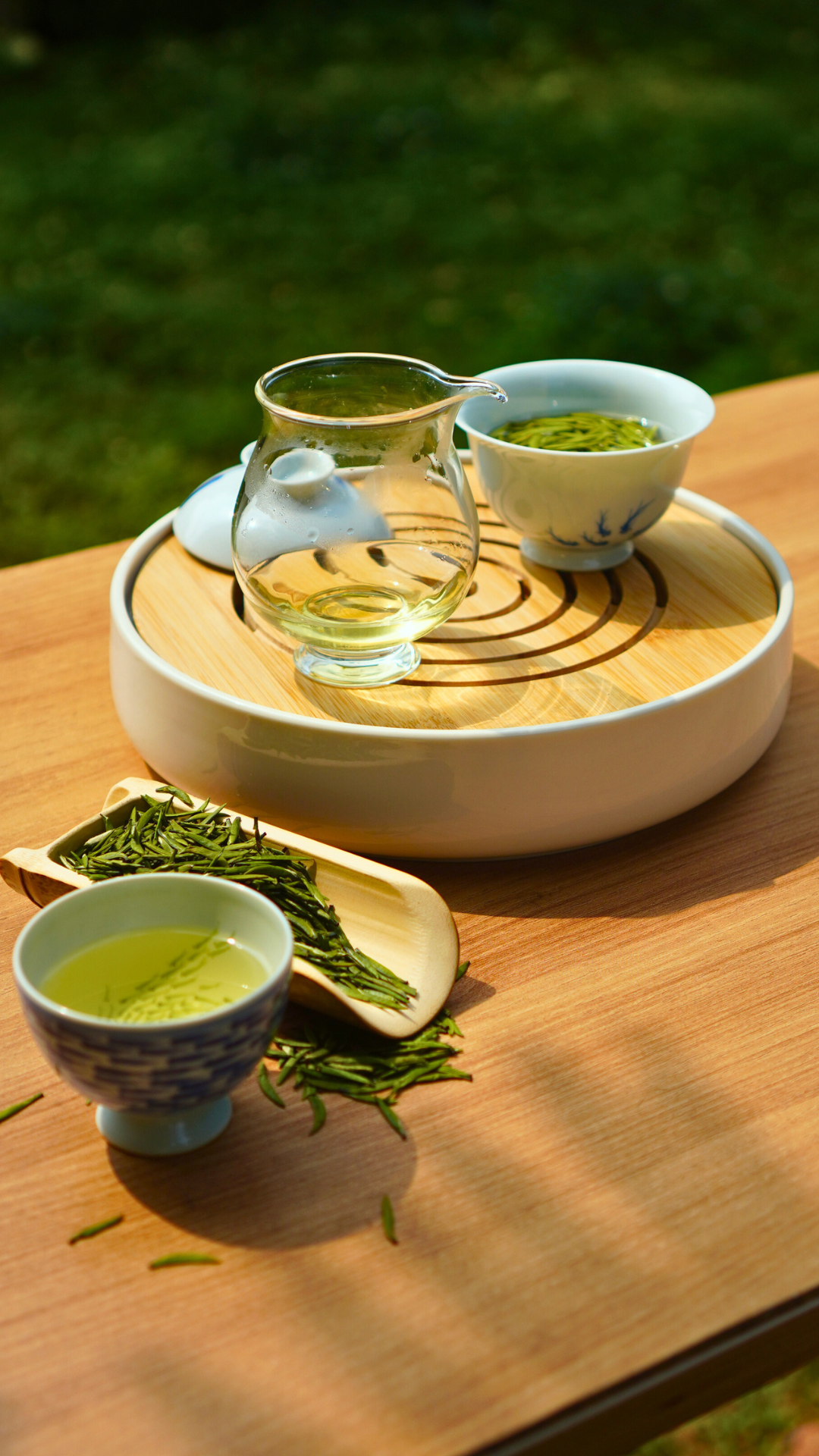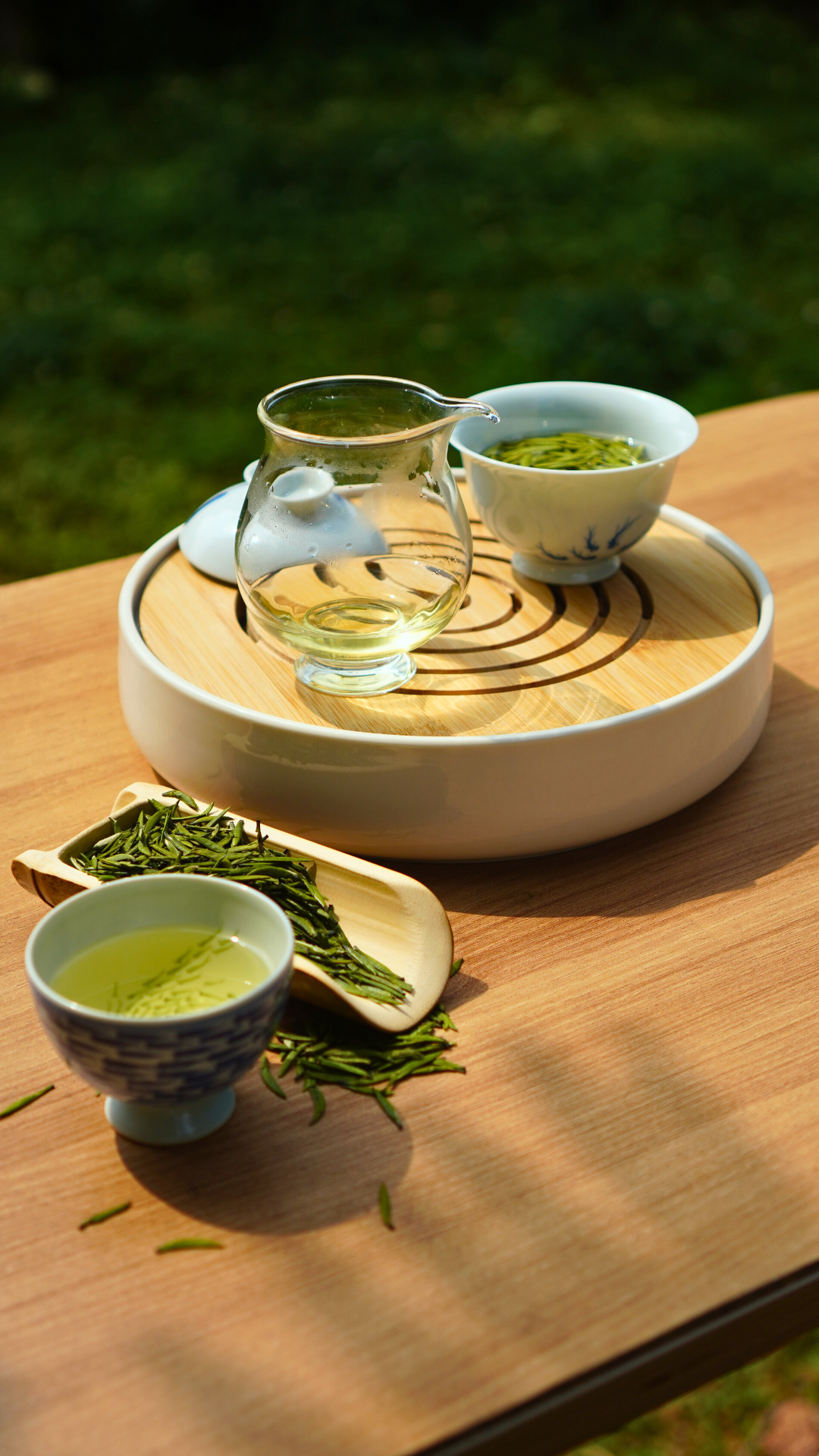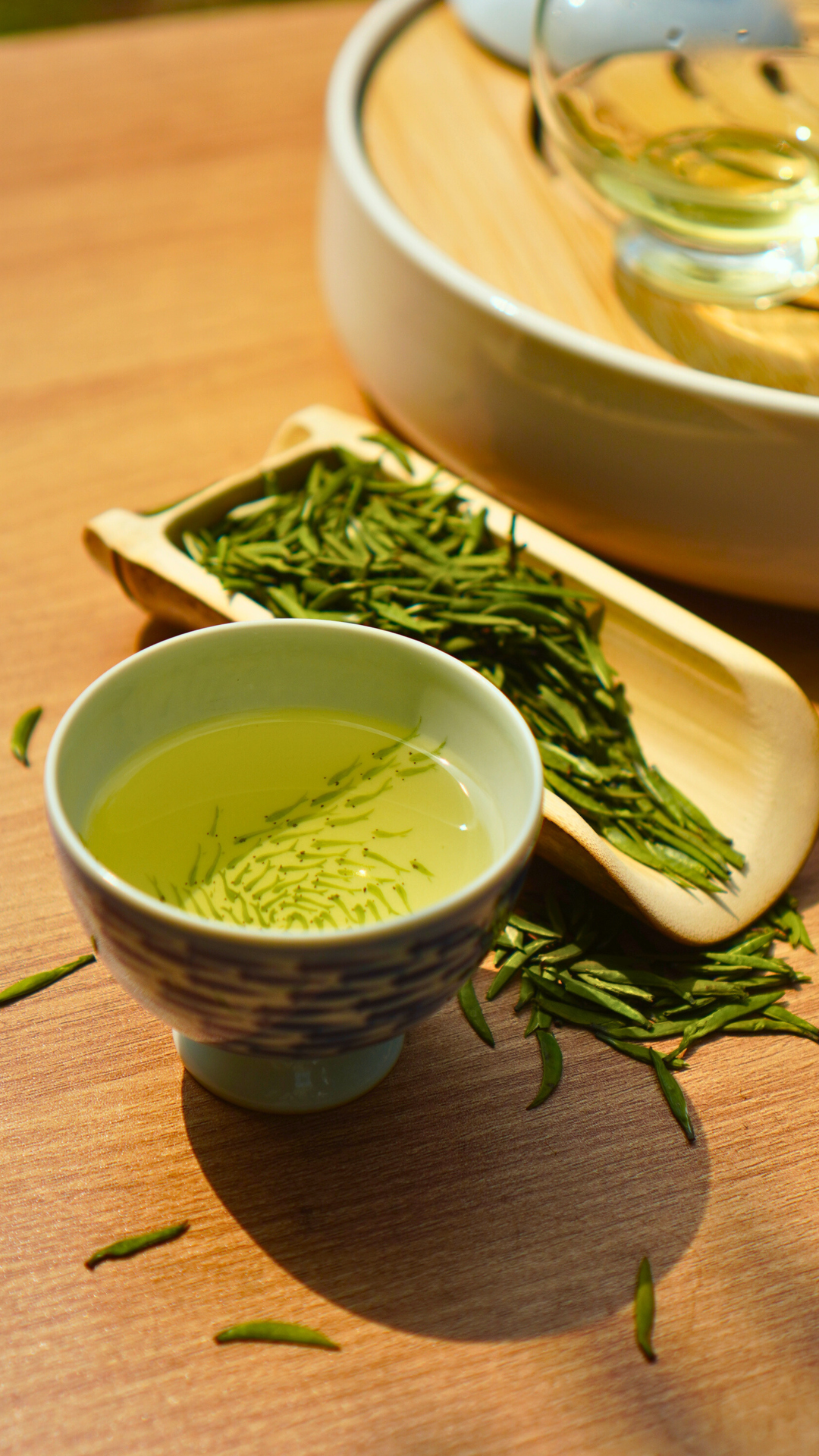Bashan Que She (Sparrow Tongue)
Bashan Que She (Sparrow Tongue)
巴山雀舌
Bashan Que She (Sparrow Tongue) Green Tea is crafted from the finest, tender bud tips harvested before Qingming (early spring). The leaves are flat and straight, with a vibrant jade green color. The liquor is a bright yellow-green, emitting a fresh and delicate aroma. Its taste is brisk, smooth, and sweet with a lasting aftertaste. The tender green infused leaves resemble the tongue of a mountain sparrow, giving the tea its name. It is especially prized for its "vivid green color, rich aroma, sweet aftertaste, and elegant shape."
Renowned for its high selenium content, Bashan Que She is often called the “King of Selenium-rich Teas” and a “Rare Treasure among Sparrow Tongue Teas.” Rich in polyphenols, it boasts strong antioxidant properties, helping to eliminate toxins, delay aging, reduce the risk of cancer and hypertension, prevent pigmentation, boost vitality, and protect against radiation.
This tea hails from Wanyuan City in Sichuan Province, a region known as the “Source of Ten Thousand Treasures” and designated as a national model zone for selenium-rich green tea production. The area boasts ideal natural conditions for tea cultivation, with rolling mountains, dense vegetation, high humidity, and fertile, slightly acidic soil. The tea plants are part of the Sichuan medium-leaf group variety.
Tea cultivation in the region dates back to the Zhou Dynasty, with historical references found in Chronicles of Huayang – Ba Records. One of the earliest stone inscriptions about local tea production, The Record of Mingling Garden in Ziyunping, originates from the Song Dynasty. In the early 1980s, under the guidance of a professor from Southwest University, two researchers in Wanyuan collaborated with the local Caoba tea workers. After years of study, they successfully developed this exquisite tea in 1987—Bashan Que She.
Picking and Processing
Picking and Processing
This premium-grade Bashan Que She green tea is harvested during the Qingming season, using only 100% tender bud tips. The leaves are expertly crafted into a flat, upright shape.
Shaping technique involves alternating between single and double-hand methods. With fingers extended, the tea is gently grasped and pulled back, allowing the buds to flick naturally from the thumb joint. Movements include pressing, smoothing, expanding, grasping, lifting, flicking, and shaking — ensuring the shape is set while preserving the bud's integrity.
Processing steps:
Spreading the fresh leaves
De-enzyming (kill-green)
Shaping and flattening
Cooling and airing
Isolated reshaping
Further airing
Gentle drying
Additional airing Baking to enhance aroma
Final airing Storage
Brewing
Brewing
Tea amount: About 3g
Brewing vessel: Transparent glass cup or gaiwan (lidded bowl)
Brewing temperature: 85-90°C (185-194°F)
Brewing method: First, pour a small amount of hot water into the cup, let it steep for about 30 seconds, then fill the cup with more water.
Note: The purpose of the initial gentle infusion is to allow the dry leaves to absorb water and unfold. This not only enhances the visual appeal but also helps to bring out the full color, aroma, and taste of the tea.
Green Tea Storage
Green Tea Storage
It's recommended to store about 50g of green tea in sealed bags in a cool, dark cabinet or drawer for daily use. If room temperature is high, refrigerate at 0-5°C. Store remaining tea sealed in the freezer. This way, green tea can maintain its flavor for up to 2 years.
First, high temperature is the biggest concern in storage. For tea leaves, especially green tea, temperature is the most crucial factor to monitor. This is mainly because high temperatures accelerate the degradation of chlorophyll in green tea, continuously converting it into pheophytin, causing the color to turn dark brown. Research shows that for every 10°C increase in temperature, the rate of browning accelerates 3-5 times, and tea leaves easily become stale. Additionally, high temperatures intensify the auto-oxidation of tea polyphenols, dramatically reducing their content and thereby decreasing the tea's value.
Second, light exposure is another factor to avoid when storing green tea. Especially during summer and autumn when light is much stronger than in other seasons, improper storage can cause plant pigments and lipids in green tea to undergo chemical reactions, producing various off-flavors and resulting in a sun-damaged taste.
Third, foreign odors must be avoided. Particularly in summer and autumn when temperatures are generally higher, items tend to emit strong odors during storage, and green tea easily absorbs these odors, leading to deterioration. Therefore, isolation from foreign odors is essential during storage.
Finally, oxygen is the root cause of off-flavors in almost all stored items. This is because oxygen can catalyze or play a crucial role in many chemical reactions. Tea polyphenols in green tea are strong antioxidants, making them highly susceptible to oxidation. After oxidation, the brewed tea turns deep yellow and loses its fresh green tea aroma.
Common Storage Methods for Green Tea
1. Plastic Bag and Aluminum Foil Storage Method: Choose food-grade plastic bags with seals, preferably those with high density and good material quality. Avoid using scented or recycled plastic bags. After placing tea in the bag, squeeze out as much air as possible. Using a second plastic bag in reverse direction is even better. Clear plastic bags should avoid sunlight exposure. Aluminum foil bags work on similar principles. Additionally, divide purchased tea into separate sealed bags, store them in the refrigerator, and brew in batches to minimize air exposure after opening, thus slowing quality deterioration.
2. Metal Container Storage Method: Choose iron, stainless steel, or dense tin containers. For new containers or those previously used for other items with residual odors, place some tea powder inside, close the lid, shake in all directions to wipe the inner walls, then discard to remove odors. Double-lidded stainless steel tea containers available in the market are convenient and practical. Using clean, odorless plastic bags inside metal containers with tape-sealed lids is even better. Metal containers with tea should be kept in cool, shaded places away from direct sunlight, odors, moisture, and heat sources. This prevents rust and slows tea aging and deterioration. Tin containers are particularly effective at preventing moisture, oxidation, light exposure, and odor absorption.
3. Low-Temperature Storage Method: Maintain tea storage environment below 5°C using refrigeration or freezer storage. Note that for storage periods under six months, refrigeration at 0-5°C is most economical and effective; for periods over six months, freezer storage (-10 to -18°C) is better. Tea should be properly packaged and completely sealed to prevent odor absorption. When purchasing large quantities, divide into small packages (containers) before refrigeration/freezing, and remove only the amount needed for brewing. Avoid repeatedly freezing and thawing the same package.
- Loose Green Tea
- 500g/pouch
- Free Shipping
Couldn't load pickup availability
